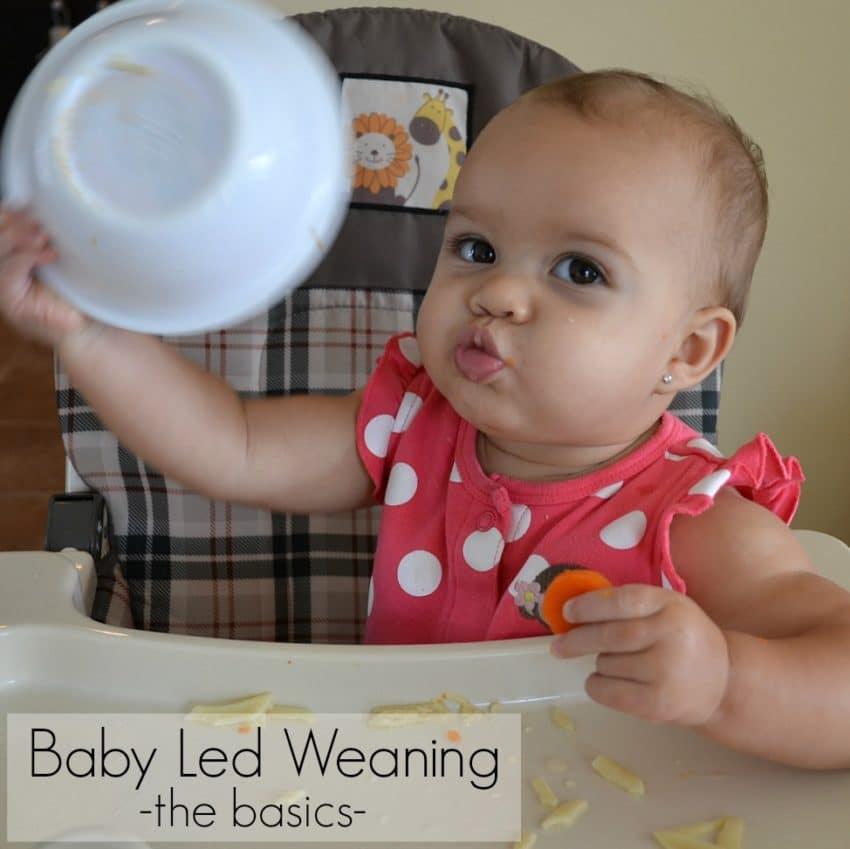Baby Led Weaning – The Basics
Two and a half years ago, I had a friend who tried to convince me to give Baby Led Weaning a shot. Right off the bat, I thought she was absolutely insane! There was no way I was going to give solid pieces of food to my toothless six month old. She continued to bring it up, until finally I caved in hopes of her dropping the subject.
My first BLW experience was with sweet potato fries. I sliced them into regular fry sized pieces, drizzled some olive oil over them and popped them in the oven. Once they were baked and cooled, I plopped Adri into her high chair and placed the fries on the tray for her to try. To my surprise, she didn’t choke to death and actually managed to eat some of her sweet potato slices.
What is Baby Led Weaning?
Baby Led Weaning works by completely skipping the puree stage and allowing infants to feed themselves solid finger foods. With BLW, the baby learns to chew then swallow, as apposed to purees where they’re automatically taught to just swallow their food. Because of this, Adri had exactly zero close calls with choking on her food. With Veronica, I can’t tell you how many close calls there were once she started eating real solids. Baby Led Weaning also allows the baby to explore the textures of foods in their hand as well as the fine motor skills involved with grabbing the food and bring it to their mouths.
When can you start?
With Juliana, we’re waiting until she turns six months old before we give her anything other than breastmilk. It’s important that babies are able to sit and hold their head up and are able to reach for objects around them before attempting to start BLW.
What can baby eat?
I’m approaching the food that we’ll be feeding Juli in the same way that we would if we were pureeing her food. I’m using this guide which shows the suggested food items by age for babies. Just like we did with purees, we’ll start by feeding Juli vegetables first and wait about three days between new foods in case of allergic reactions. A few great first foods include: avocado, squash, sweet potato, apple, banana, and pear, which should all be steamed or baked until they’re nice and soft enough for a baby to mash with their gums.
One of the biggest benefits that I saw with Baby Led Weaning is that the little one is feeding themselves from the get go. No need to feed the baby while your plate sits at the table untouched. As baby is introduced to a larger variety of foods, it’s eventually possible for them to pretty much eat exactly what the grown ups are eating. It was so easy to set aside a few shreds of chicken, some spiral pasta, and cubes of cheese for Adri while the rest of the family was enjoying dinner such as Chicken Parmesan.
I’m really excited for this new journey with Juli and can only hope that she’ll be as receptive to it as Adri was!

